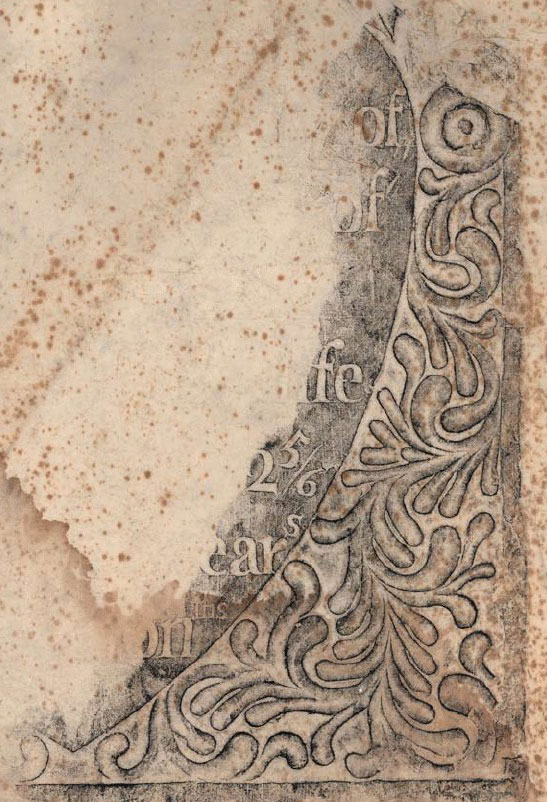- Relief printing
- Intaglio and planographic printing
- Color printing
- Bits and pieces
- Early photography in silver
- Non-silver processes
- Modern photography
- Color notes
- Color photography
- Photography in ink: relief and intaglio printing
- Photography in ink: planographic printing
- Digital processes
- Where do we go from here?
Bits and Pieces

Rubbing. John Stevens. Decorative tombstone border carved in slate. c. 1715. 17 1/2 x 11 1/4" (44.5 x 28.6 cm). Printed by John Howard Benson. c. 1940. The Museum of Modern Art, New York. Gift of Richard Benson.
The mechanically derived picture was an age-old pursuit. The ultimate solution was photography, in which light itself formed the image, but long before that medium’s invention there were attempts to somehow make pictures without having to learn to draw. The problem here was to find a physical analog—some structure that mimics the modulations of another—for the object being copied. (For the baby boomers among us the most common analogs used to be the old vinyl records; the wiggles and ups-and-downs of the groove on each side of the record imitated the frequency and intensity levels of the recorded music.) Three-dimensional analogs could be made from the earliest years of civilization, by casting objects: a mold could perfectly imitate the form of the original, and multiple copies could be made easily. The most common of these was and is the building block, cast from a fabricated mold to imitate the carved stone blocks of earlier times. Copying two-dimensional pictures proved to be far more complex. There were many efforts to find pictorial analogs, and this small section describes a few of them.

